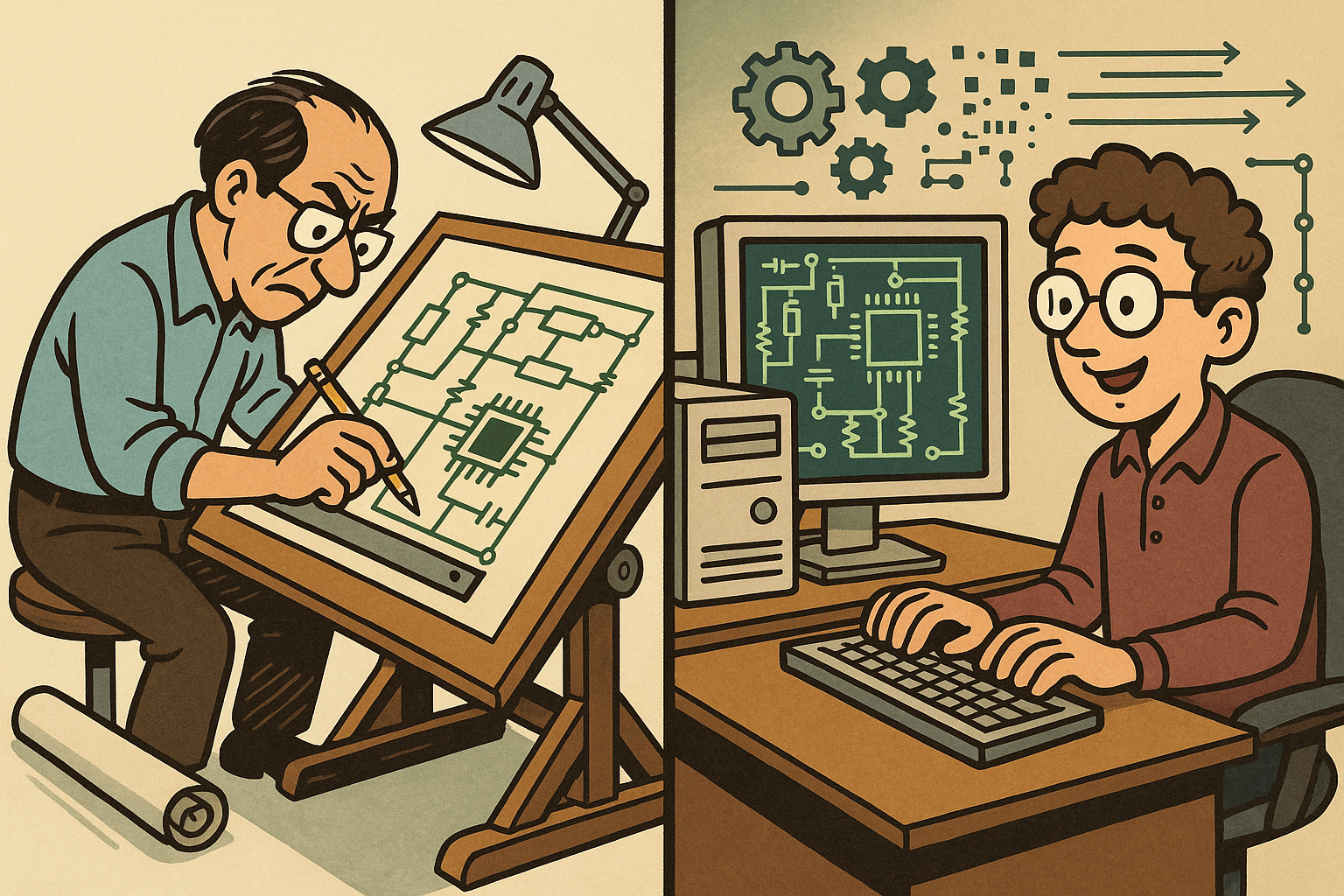Your Cart is Empty
Customer Testimonials
-
"Great customer service. The folks at Novedge were super helpful in navigating a somewhat complicated order including software upgrades and serial numbers in various stages of inactivity. They were friendly and helpful throughout the process.."
Ruben Ruckmark
"Quick & very helpful. We have been using Novedge for years and are very happy with their quick service when we need to make a purchase and excellent support resolving any issues."
Will Woodson
"Scott is the best. He reminds me about subscriptions dates, guides me in the correct direction for updates. He always responds promptly to me. He is literally the reason I continue to work with Novedge and will do so in the future."
Edward Mchugh
"Calvin Lok is “the man”. After my purchase of Sketchup 2021, he called me and provided step-by-step instructions to ease me through difficulties I was having with the setup of my new software."
Mike Borzage
Embracing Data-Driven Design: Revolutionizing Product Development with Advanced Analytics
October 02, 2025 12 min read


Setting the Stage for Data-Driven Design
Overview of Product Development Shifts Toward Data-Centric Methodologies
In recent years, the landscape of product development has undergone a fundamental transformation, moving decisively from intuition-based decision-making toward **data-centric methodologies** that integrate quantitative insights into every step of the process. Modern design environments now embrace vast streams of information obtained from customer interactions, sensor outputs, and real-time market feedback, which in turn reshape the underlying philosophies behind innovation. This shift is not merely a change in available tools but also a cultural revolution in engineering and product design where empirical evidence advocates for iterative improvements and precision. The convergence of traditional hand-drawn sketches and digital mockups with advanced data analytics has provided companies the ability to predict market trends and refine prototypes with unprecedented speed and reliability.
With new data capture technologies, designers now rely on comprehensive feedback loops that constantly validate design assumptions. This integration of big data offers insights into performance metrics and usage patterns, allowing organizations to optimize products before they are even fully realized. Moreover, the infusion of statistical evidence not only enhances the fidelity of design concepts but also establishes an environment where decisions are backed by rigorous computation rather than solely by creative speculation. Fundamental aspects such as user experience, durability, and cost efficiency are increasingly measured against consumer data, enabling firms to achieve a competitive edge in saturated markets. As digital transformation permeates every industrial domain, the rich interface between analytics and design promotes continuous improvement and fosters a culture of experimentation. This paradigm not only secures future success but also ensures that every design decision is calibrated to current market dynamics, paving the way for more efficient, user-friendly products developed in shorter cycles.
The Evolution of Traditional Design Software into Intelligent, Data-Empowered Platforms
Traditional design software, which once served as static drawing boards and simulation platforms, has evolved into dynamic, data-empowered systems that integrate real-time analytics and adaptive algorithms. The advanced capabilities of modern tools now incorporate **machine learning** techniques that can automatically detect inconsistencies and suggest optimization pathways during the design process. Early iterations of CAD and simulation software primarily allowed users to render models and validate structural integrity, but recent trends have revolutionized these platforms into integrated ecosystems. Designers now work with interfaces that are not only robust in functionality but also smart enough to recommend design alternatives based on historical performance data and predictive algorithms.
The evolution represents both technical and human-centric progress. On the technical side, these platforms now seamlessly integrate with databases that aggregate sensor-derived information, performance metrics, and even customer feedback. This integration provides a feedback loop that continuously refines the design parameters. On the human side, engineers and designers can now devote more time to innovation rather than routine checks, as automation handles error detection and preliminary validation. Furthermore, intelligent data empowerment allows for parallel simulation and performance analysis, enabling teams to iterate simultaneously on multiple design scenarios. Key features such as automated error correction, parameter optimization, and trend analysis have now become integral, resulting in a more cohesive process that bridges design and data. Bullet points summarizing these technological leaps include:
- Real-time integration of performance data and simulations
- Automated error-checking features powered by statistical models
- Enhanced user interfaces with predictive design recommendations
The Role of Big Data Analytics in Enhancing Design Decision-Making
Big data analytics has become a cornerstone in the quest for optimized product design, offering insights that were previously unattainable with traditional methods. By harnessing vast volumes of data from diverse sources—spanning sensor outputs, environmental monitoring, user interactions, and digital footprints—designers are now better equipped to make informed decisions that reflect both performance and user expectations. The integration of **big data analytics** into design practices transforms the conventional approach by merging quantitative evidence with aesthetic and functional design choices. In modern workflows, this technological synergy is evident in the ability to simulate a multitude of real-world conditions before committing to a physical prototype. By incorporating such data, organizations can drastically reduce the risk of costly errors and accelerate the development cycle.
These benefits extend into every facet of the design process. For example, data-driven insights allow for more accurate predictions of product durability, ergonomic performance, and overall usability by analyzing historical data and real-time user feedback. Designers are now capable of tracking how products perform under variable conditions, which leads to an iterative process where designs are refined based on objective performance metrics rather than subjective judgment alone. Moreover, with sophisticated data visualization tools embedded into design platforms, complex sets of data become accessible through intuitive dashboards and interactive models, making it easier for cross-functional teams to interpret and act upon critical insights. The process of integrating big data into design decision-making is further enhanced by:
- Detailed modeling and simulation of diverse operational scenarios
- Visualization frameworks that present data in actionable formats
- Predictive analysis that highlights potential design flaws early in development
Big Data Analytics in the Design Process
Understanding Key Big Data Concepts: Data Collection, Processing, and Visualization
The foundation of integrating analytics into the design process begins with a comprehensive understanding of key big data concepts. Effective data collection involves gathering a diverse array of information from deployed products, digital sensors, and user interactions, all of which create a robust dataset. After gathering this data, processing it into meaningful metrics becomes a critical step, requiring sophisticated algorithms and computational power to transform raw numbers into actionable insights. In this context, designers benefit from **data processing techniques** that enable pattern recognition, anomaly detection, and trend analysis. Visualization then becomes the final piece of the puzzle, translating complex datasets into comprehensible graphical representations that facilitate rapid decision-making. The interplay between these stages is essential because any misstep in data collection or processing can lead to misinterpretation, thereby affecting design accuracy.
A meticulous approach to big data analytics begins with establishing secure and reliable processes to handle large volumes of data. Designers must account for the veracity and variety of the data that feed into their systems, ensuring that every piece of information is verified and integrated correctly. Data visualization tools, for example, convert this processed data into interactive models that clearly display performance trends, potential bottlenecks, or areas that require further investigation. Several bulleted strategies that help in achieving an effective big data pipeline include:
- Implementing robust data collection protocols that cover various data types
- Ensuring high fidelity in data processing through advanced filtering algorithms
- Utilizing innovative visualization techniques and dashboards
Integration Points with Design Software: CAD, Simulation Tools, and Product Lifecycle Management
Integrating big data analytics into design platforms has necessitated the development of seamless interfaces with essential tools like CAD software, simulation environments, and product lifecycle management systems. The evolution of these integration points has led to smarter, more efficient workflows, where data flows freely between design and analysis modules. Designers now benefit from the synchronization that allows every CAD model or simulation output to be directly compared against real-world data. This ability to overlay and correlate data engenders increased confidence in design modifications and accelerates the validation process. For instance, when a new design prototype is generated in CAD, the embedded analytics engine can immediately cross-reference performance data, offering immediate feedback regarding structural integrity, material stresses, or thermal performance.
Furthermore, tight integration between simulation tools and product lifecycle management systems means that every design iteration is tracked meticulously, providing a historical record that fuels further innovation. This ecosystem is further enriched by features such as automated model adjustments based on prior performance anomalies and continuous updates from cloud-based analytics services. Prominent benefits include:
- Enhanced data flow between real-time simulations and CAD modifications
- Streamlined product lifecycle management integrated with predictive analytics
- Automated adjustments that reduce the need for manual recalibration and testing
Leveraging Machine Learning and Statistical Modeling to Predict Performance and Refine Design Parameters
The application of **machine learning** and statistical modeling within design analytics represents a pivotal advancement, enabling the prediction of product performance with high accuracy. Through sophisticated algorithms, design software can now learn from historical data and simulate various scenarios to forecast how a product will perform under different conditions. This predictive capability serves as an invaluable tool for refining design parameters, as iterative testing and adjustment become largely automated. Designers can set initial parameters and then allow these intelligent systems to propose optimizations that enhance performance, reduce material waste, and ensure compliance with industry standards. In many cases, these systems are designed to continuously evolve, learning from new data as products are developed and deployed.
Statistical models further complement machine learning by providing quantifiable measures of uncertainty and reliability. In practice, the combination of these techniques facilitates the identification of design outliers, the assessment of risk factors, and the pinpointing of potential weaknesses long before a product reaches the market. The benefits of such integration include increased design accuracy, minimized trial-and-error cycles, and significant reductions in both time and cost. Key elements of this approach involve:
- Developing adaptive algorithms that refine design parameters in real time
- Incorporating statistical confidence levels to isolate potential failure points
- Optimizing material properties and structural configurations through data feedback
Illustrating Data Integration in Product Development Workflows Through Practical Insights
Although explicit case studies are not discussed here, practical insights into the integration of big data into product development workflows reveal a paradigm where data is used as both a diagnostic and prognostic tool. In contemporary design environments, data integration facilitates the systematic review of design iterations, where each refinement is assessed based on performance simulations, user feedback, and historical trends drawn from previous projects. This holistic approach not only streamlines the design cycle but also provides metrics that drive continuous improvement. By embedding advanced analytics directly into design tools, organizations have reported improvements in efficiency, an increased level of accuracy in performance predictions, and reduced lead times for product launch. Such benefits illustrate the scale at which data integration transforms the way engineers approach problems, allowing for real-time adjustments that traditionally would have required lengthy manual computations and testing.
The practical implementation of these analytics tools within design workflows includes several bullet points that underscore their significance:
- Automated performance benchmarking that aligns design outputs with real-world requirements
- Data-driven feedback loops which continuously refine design criteria
- Enhanced collaboration between design and analysis teams through shared, interactive dashboards
Challenges, Strategies, and Best Practices
Common Challenges in Implementing Big Data Analytics in Design Environments
Incorporating big data analytics into the design environment is a complex undertaking that introduces several challenges. One of the primary obstacles is ensuring that the **quality of data** remains high across all touchpoints, which necessitates consistent and accurate collection protocols. Data quality issues often arise due to inconsistent input formats, missing data points, and the inherent variability in sensor outputs or user feedback. Another significant challenge is achieving seamless integration among disparate systems. Design software, simulation tools, and lifecycle management systems each operate under differing paradigms, and unifying them into a cohesive, interoperable framework requires both technical ingenuity and organizational alignment. In addition, the sheer volume of data produced, especially in real-time applications, can lead to performance bottlenecks that impede rapid decision-making.
Other hurdles include the need for specialized skills in data interpretation and the ongoing challenge of keeping pace with evolving technologies, which lead to issues in legacy system integration. Misalignment among team members, with varying degrees of technical proficiency, further complicates the incorporation of analytics into established workflows. To summarize, the major challenges include:
- Data quality and integration compatibility issues across multiple systems
- Managing and interpreting large datasets in real time
- Ensuring that all team members have the necessary skills to leverage advanced analytics
Strategies and Best Practices for Overcoming Technical and Organizational Hurdles
To overcome the aforementioned challenges, organizations need to adopt a multifaceted strategy that spans technical upgrades, process improvements, and organizational restructuring. A critical element of this approach is the creation of resilient, cross-disciplinary teams that combine the expertise of design engineers, analysts, and IT professionals. By fostering collaboration between these roles, companies can ensure that both the technical and organizational aspects of data integration are effectively addressed. Investing in scalable cloud solutions and edge computing has also proven indispensable for handling data in real time, as these technologies offer the processing throughput and storage capabilities needed to manage massive datasets. Furthermore, the gradual, incremental integration of analytics into existing design pipelines mitigates the risks associated with rapid, wholesale technology shifts.
Best practices in this domain include a systematic evaluation of current workflows, followed by the integration of adaptable analytics tools that complement rather than overhaul existing systems. This strategy helps maintain smooth operational continuity while affording the flexibility to implement incremental improvements. Moreover, organizations must place a premium on data governance, ensuring that every piece of data is validated and contextualized before it informs design decisions. Additional strategies that have demonstrated effectiveness include:
- Establishing regular training sessions to improve the digital literacy of design teams
- Implementing pilot projects that allow for the measured introduction of analytics capabilities
- Adopting agile methodologies that permit rapid iteration based on continuous data feedback
Investing in Scalable Cloud Solutions, Edge Computing, and Interdisciplinary Collaboration
In addition to addressing system integration and data quality issues, an important strategy for the successful incorporation of big data analytics into design is investing in modern technological infrastructures such as scalable cloud solutions and edge computing frameworks. These investments provide the necessary foundation for handling the large-scale data processing demands typical of contemporary design environments. Cloud technologies offer elasticity in resource allocation, enabling teams to upscale computational capacities during peak data processing periods without incurring permanent infrastructure costs. Similarly, edge computing brings data processing closer to the source, reducing latency and improving the responsiveness of real-time applications—a critical factor in fast-paced product development cycles.
Beyond technological investments, fostering interdisciplinary collaboration is crucial for truly leveraging the potential of data-driven design. When design engineers, data scientists, and IT professionals work in tandem, they can bridge the gap between raw data and practical design applications. This collaborative approach facilitates the translation of complex analytics into actionable design insights, creating tangible improvements in product performance and reliability. The essential best practices in this context include:
- Committing to long-term investments in scalable cloud infrastructures that guarantee flexibility and performance
- Deploying edge computing solutions to streamline real-time data processing and reduce delays
- Promoting cross-functional team initiatives that combine diverse expertise to maximize innovation
Conclusion
Recap and Call to Embrace Data-Driven Design for Future Innovation
The integration of big data analytics into product design is fundamentally reshaping the way products are conceived, developed, and refined. As demonstrated throughout this discussion, the shift toward **data-driven decision-making** encompasses everything from the evolution of traditional design software into intelligent, adaptive platforms to the intricate analysis performed by machine learning algorithms and statistical models. This transformation is facilitating the creation of products that are not only optimized for performance and user satisfaction but are also resilient in the face of rapidly changing market conditions. By leveraging advanced data collection, processing, and visualization techniques, design teams are able to generate insights that drive practical design improvements and reduce the element of uncertainty inherent in innovation.
However, the journey toward a fully integrated data-driven design process is not without its challenges. Data quality issues, integration complexities, and the need for cross-disciplinary collaboration remain significant hurdles. Nonetheless, by investing in scalable cloud solutions, edge computing, and robust training programs, organizations can strategically overcome these obstacles. In doing so, they set the stage for more agile workflows and sustained competitive advantage. In today's fast-paced design landscape, embracing these transformative technologies is not optional—it is a necessity for any organization committed to long-term success. Design professionals are encouraged to continuously experiment, iterate, and invest in evolving their analytical tools and skills. The future of product design belongs to those who harness the power of data to drive innovation, paving the way for creative, efficient, and sustainable engineering solutions.
Also in Design News

Design Software History: Early Electronics CAD: From Manual Drafting to Algorithm-Driven Design and Its Impact on the Industry
October 02, 2025 10 min read
Read More
Cinema 4D Tip: Streamline Scene Management in Cinema 4D with the Stage Object
October 02, 2025 3 min read
Read More
Bluebeam Tip: Optimizing Document Workflow with Bluebeam Revu's Text Recognition Feature
October 02, 2025 2 min read
Read MoreSubscribe
Sign up to get the latest on sales, new releases and more …


